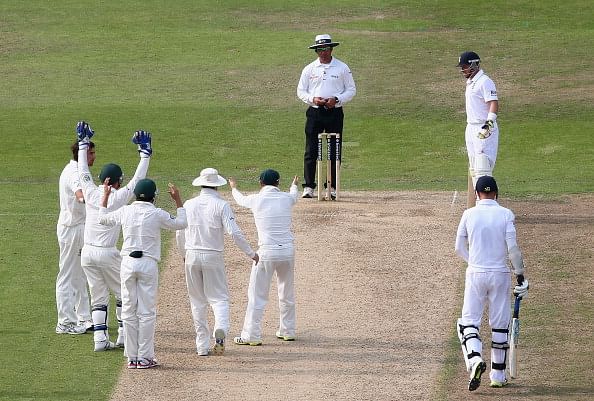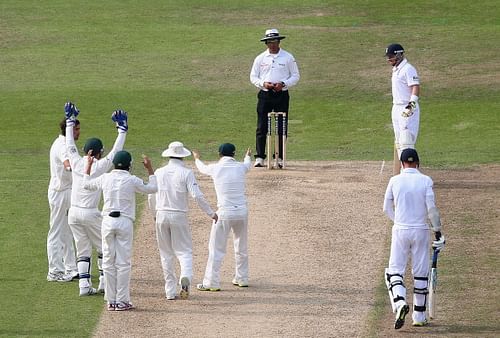
Is the 'spirit' of the game a myth?

The Australian players look on after Umpire Aleem Dar turned down an appeal against Stuart Broad of England during day three of the 1st Investec Ashes Test
It’s amazing how Sir Donald Bradman had achieved everything there was to achieve. An aura of pure magnificence protruded from every pore of his skin. If you were to achieve enlightenment as a cricketer, you’d see Mr. Bradman in that sub-conscious of yours. There was nobody like him and there almost certainly will never be anyone again.
Yet, despite all the praise, he fell short of a mere four runs. He had built an entire history and era of cricket with that bat of his, but when it came to scoring those four final runs, he failed. A man who stacked hundreds for fun, couldn’t hit four singles in his last inning. An amazingly tragic end to a blissful career. Bradman ended his career with an average of 99.94 runs per inning, four short of a magical 100.
Or did he?
The technology human beings possess today was the stuff of science fiction back then. Umpires didn’t have the luxury of referring to a man in front of a TV who could return to any part of proceedings on a whim. But what they did possess was common human error.
Many cricket historians and statisticians don’t rule out an umpiring error (or even the scorers’) with regards to Bradman’s average. A little tickle down to fine-leg may easily have been misinterpreted as a leg-bye, or a simple mix-up may have attributed a few of his runs to his non-striking partner. The possibilities are many, but the source is common human error.
As a cricketer back then, you could whine and wave your bat around in protest, but the decision did not budge. If you were out, you could say whatever you wished but in the end you’d have to find yourself in the pavilion.